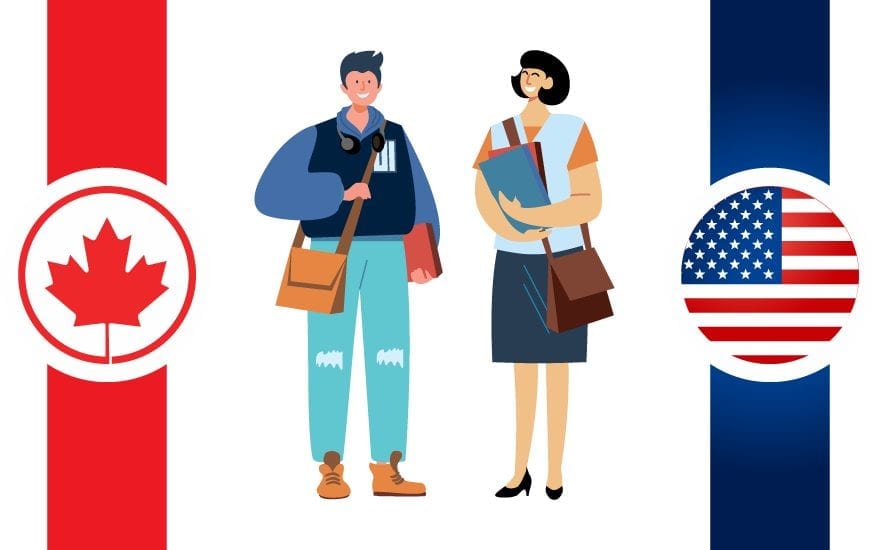
Introduction:
With millions of international students flocking to North America for higher education, the choice between Canada and the United States has become a crucial decision. While both countries offer quality education and post-graduation opportunities, there are key differences in tuition, financial aid, and immigration prospects that make Canada a preferred destination among international students. In this guide, we’ll provide a thorough comparison to help you make an informed decision.
Quality of Education:
Canada and the U.S. both offer high-quality education, with prominent cities like Montreal, Toronto, Vancouver, Boston, and New York City hosting top-tier institutions. A 2023 ranking by QS revealed an even distribution of excellent student cities between the two nations. However, when we delve deeper, we find that international students overwhelming prefer Canada, with 27% choosing it as their first destination, compared to 15% for the U.S. This preference underlines Canada’s appeal.
Price:
Tuition costs significantly influence the choice of study destination. In the U.S., the average cost of education ranges from $20,000 to $60,000 USD, varying based on the institution and level of study. In contrast, Canada offers a more cost-effective option, with average tuition between $20,000 to $40,000 CAD. The favorable exchange rate and lower tuition costs make Canada an attractive choice for international students when compared to the U.S.
Financial Aid:
Financial aid options are essential for international students. Canada provides numerous scholarships and bursaries at university, provincial, and federal levels. These are often easier to access compared to the U.S., which lacks federally funded programs for international students. Canadian banks also offer private loans with student-specific interest rates, making repayment more feasible for international students.
Work Opportunities:
Both Canada and the U.S. offer promising work outcomes for international students. Graduates in both countries find full-time employment opportunities. While the percentages may vary, the overall outlook is comparable. Work opportunities are widely available for international students in both countries.
Immigration Options:
The path to permanent residence is a crucial consideration for international students. In Canada, the process is more straightforward. After completing an eligible program at a Designated Learning Institution (DLI), students can apply for a Post Graduate Work Permit (PGWP). With at least one year of Canadian work experience, various pathways to permanent residence are available, including Express Entry (Canadian Experience Class), Provincial Nominee Programs, Quebec immigration, and spousal sponsorship.
In the U.S., the path to a green card (permanent residence) can be challenging, with limited pathways, including immigrant worker categories, investor visas, or marriage to a U.S. citizen. The annual quota for economic immigrants eligible for a green card is only 140,000, making the process highly competitive.
Conclusion:
The choice between studying in Canada and the United States is a pivotal decision for international students. Canada’s internationally accredited institutions, favorable tuition costs, extensive financial aid options, and straightforward immigration pathways make it a top choice. If you’re considering studying in Canada and need expert guidance, contact Unitia Immigration Consulting Inc at info@unitiaimmigation.com or visit our website at https://unitiaimmigration.com/.
Unitia Immigration Consulting Inc is your trusted partner for a smooth and successful educational journey in Canada. Contact us today to explore the opportunities that await you in one of the most sought-after international study destinations.

